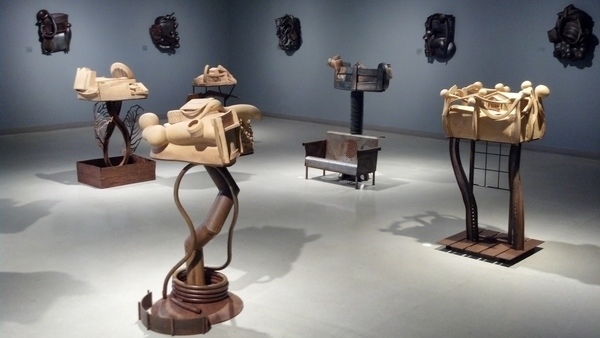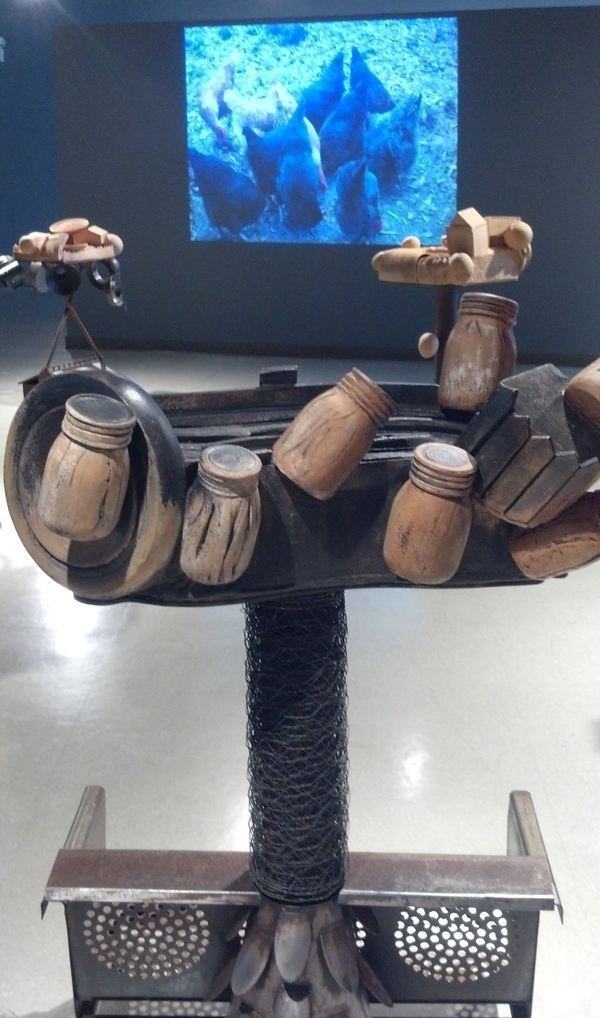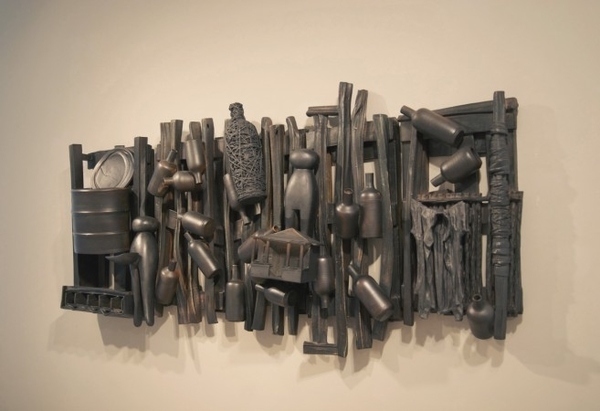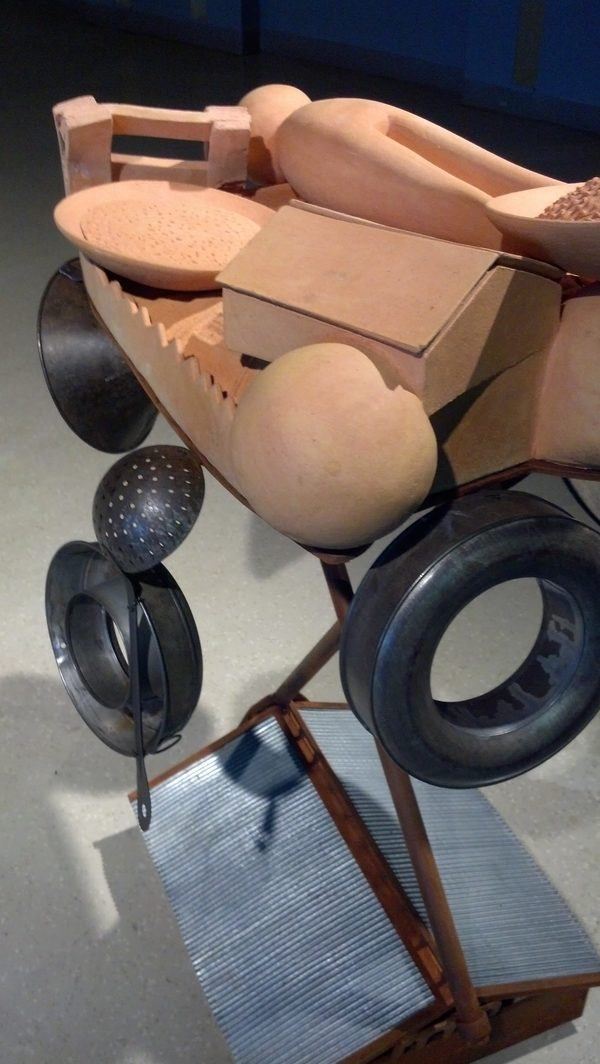[Jennifer visits an exhibition of evocative sculptural work by artist and Swarthmore professor Syd Carpenter, whose inspiration came from traveling to African American-owned farms and gardens in the South. — the Artblog editors]
Syd Carpenter’s ceramic and steel sculptures describe literal and ideological aspects of historic, black-owned farms and gardens in the American south. Carpenter’s works, both freestanding and high-relief, are now on view in an exhibition entitled More Places of Our Own at the African American Museum in Philadelphia through August 17. The installation also includes a video of the people and places Carpenter visited during a driving tour of Georgia and South Carolina, where she met firsthand the gardeners and farmers who inspired this body of work. Carpenter discussed this trip in a previous artblog interview, which can be heard here.
Giving everyday items new context

The freestanding sculptures are presented together in the gallery like trees in a forest, or people standing together in a group. Titles such as “Helen and Joseph Fields” and “Mary Howard” help to explain how each work represents specific people and their land. Sculptural details flesh out this connection: cows, birds, shotguns, wheels, buildings, tools, mason jars, pie pans, and fields are all present and made from what appears to be unglazed, light-tan earthenware. These items describe the inventories and material cultures of the working life and ways of being of black farmers.

Another exhibition currently on view just down the ramp from Carpenter’s gallery heightens our understanding. Distant Echoes: Black Farmers in America offers photographic portraits and a documentary-style video about the same subject that Carpenter explores with her work. The video in Distant Echoes is revelatory, outlining a history completely unknown to me, and one which suggests the dire economic situation many farmers find themselves in today. Southern black farmers experienced the effects of the Depression about a decade prior to the stock market crash, making their recovery particularly challenging, if not impossible. Afterward, relief efforts ignored thousands of tenants or sharecroppers as recovery aid went solely to landowners. The video explains how historic and current losses diminish dollars and acres as well as a rich and extraordinary culture. Farmers and their families have built their own geographies and traditions–which may have roots reaching back to the agrarian ways of life in West Africa, as the video outlines. Cultural events and gatherings are often celebrated in local churches built from timber taken from the cleared areas of black-owned farms. Losing these farms could mean the loss of an immeasurable history.
Cultural rebirth and protection

Carpenter’s sculptures celebrate the building-up of structures, traditions, and places. In previous interviews, the artist has alluded to how the photographs in Distant Echoes may measure loss, while her work focuses on a current revitalization. Renewed abundance is certainly symbolized in many of the sculptures here, which include the repetition of rounded shapes such as eggs, seeds, or grapes. Although made of hard-fired clay, these fecund shapes seem fit to burst. Other sculptures incorporate ceramic versions of mason jars, suggesting a plentitude intended for a certain future. Carpenter’s works seem to be as much about inventories and portraits as they are materially focused efforts to bring forth the many nuances of how these farms are celebrated within their own community, and how farmers and their families work daily to sustain culture and history.

In the piece titled “Helen and Joseph Fields,” we see funnels, Jell-O molds, and cake pans hanging like a skirt around a vignette that describes an outsized clothespin, dishes of grain, farm buildings and fences. The whole of this structure is supported by X-shaped steel supports, which in turn rest atop the tin roof of yet another farm building. Many specific details communicate who the Fields are and what they do.
But other associations may also present themselves, especially after seeing Distant Echoes in the nearby gallery. The extra-large clothespin and the hanging pans are the tools that usher forth clean clothes and abundant food to be shared with the community at a celebratory church gathering. And the raising up onto the roof of this family farm may be like a flag that signals knowingly and in support of the other black owned farms and gardens in this gallery. “Helen and Joseph Fields” is its own distinct place within a larger community and culture that is also unique.
Syd Carpenter: More Places of Our Own and Distant Echoes: Black Farmers in America are on view through August 17, 2014 at the African American Museum in Philadelphia.









